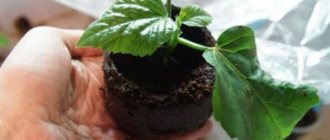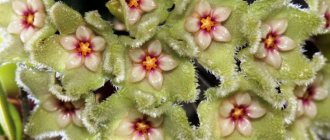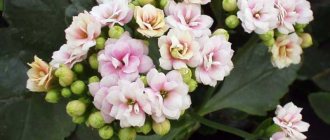Agave is a plant that belongs to a subspecies of succulents, or, more simply, cacti. They are a rosette of leaves, along the edges of which there are small spines. The greens of this subspecies have a dense, fleshy texture; it allows them to retain moisture for a long time, due to this they survive in the hottest climates. In nature, agave can be found in Central America. Like all succulents, this plant is used in the production of tequila. The blue subspecies is especially suitable for these purposes. Agave is also known for its medicinal properties; its pulp and juice have an antiseptic effect. The Chinese choose American agave juice for homeopathic ointments.
It blooms extremely rarely, for which it received the nickname agave. Some species actually bloom only once every fifty or hundred years, but for most the period before throwing out the peduncle is from ten to fifteen. It appears on a separate long stalk, which sometimes reaches up to nine meters; the flowers bloom gradually over almost a month. After the end of this cycle, the rosette from which the flower arrow appeared dies. But new shoots are appearing. After complete death, it is better to remove the faded rosette so as not to cause rotting.
Planting/growing
This beautiful ornamental plant is very large in size, which is why flower beds in the garden are much more suitable for them. The height of some species can reach up to three meters. At home, dwarf forms or young plants are grown for replanting.
The conditions for growing agave are simple; you need to create a climate similar to a desert. The light should not only be bright, there should be a lot of it. A complete absence of shadow is desirable. Therefore, it is better to keep flowers on the south window. If we consider that in its homeland the flower grows in an absolutely dry desert climate, then direct sunlight not only does not harm it, it is simply necessary. Therefore, choose those windowsills for agave that receive a lot of sun during the day. Even in summer, under the scorching rays, it feels great.
What does agave look like - description of the plant
Almost all types of succulents do not have a trunk or it is quite short. Agave is no exception: the small stem is almost completely hidden in the soil. The above-ground part of the plant is made up of a wide, rounded rosette of leaves. The leaves of the cactus are very attractive, wide and fleshy. The edges of the leaf blade are decorated with small spines. And the leaf ends with a long sharp thorn. Depending on the variety, the color of the leaves can be very different. But the key remains the green color and elegant waxy coating. Only the shade changes, from blue to gray, and in some species the leaves are decorated with whitish or yellow stripes.
In natural conditions, when the cactus grows warm all year round, it can simply grow very large rosettes. For indoor growing, very compact varieties are used. So, there are dwarf agaves, their diameter does not exceed 5 cm.
Care
In the summer, agave feels comfortable outdoors. Therefore, if you live in a country house, then it is best to take the plant outside for the summer. In winter, it needs a bright place, otherwise, when dormancy sets in, the agave will begin to grow upward, the foliage will fade and lose its attractiveness.
Using these same signs, you can determine how comfortable the living conditions are for your cactus. A south-facing balcony or loggia is perfect for growing.
What is a succulent
The homeland of the agave subfamily is the desert and rocky areas of Central America. Up to 300 plant species are found in these areas. In temperate climates, succulents are grown only in greenhouse conditions or as a potted crop.
In the parks of the southern part and greenhouses of the northern part of Russia, the American agave is most often found. The plant looks like this:
- The stem is very short and difficult to identify.
- In transverse diameter, this species reaches 3-4 m.
- An adult plant is a rosette of leaves. On young specimens the tips are in the form of a pointed tube. This is clearly visible in the photo.
- The main color of the leaves is green, but there are variegated varieties.
- Peduncle - arrow 6-12 m long. There are up to 17 thousand tiny green-yellow buds on one plant.
As a representative of succulents, agave “stores” water in its leaves, which is why the plates are thick and fleshy. The substances contained in the tissues have a healing effect on the human body. At home, as well as in some areas of the Mediterranean, India, and Sri Lanka, agave is cultivated as a medicinal plant.
The leaves are used for both economic and food purposes. Using various technologies, ropes, rugs, and paper are made from agave plates. Alcoholic drinks are made from succulent juice: pulque and mezcal.
Advice. Considering the size of adult specimens, the species is best used for landscaping spacious halls, halls, workshops, etc.
Temperature
The temperature of the air in the room is not of decisive importance. But the most comfortable temperature is considered to be no lower than 18, optimal 20-22 degrees. In winter, the plant feels good even at 4-10 degrees. This allows you not to cover it outside during warm winters. When planting a flower, pay attention to the presence of drafts; they do not cause much harm, but they do not bring any benefit either.
Like other indoor flowers, the correct temperature regime and sufficient lighting are determined by the intensity of the color of the plant. If it fades or the leaves become more shrunken, then you need to change the conditions for the indoor flower.
Agave propagation by suckers and rhizome cuttings
The plant produces babies in the form of cuttings that come from the base of the trunk. Flower growers often think that these are cuttings from the agave rhizome, but this is not so.
Cuttings should be separated after removing the mother plant from the pot. If you tear the above-ground part of the baby out of the ground, it will not take root, and the tear site may fester. The children are cut off from the trunk itself. The cut site on the mother crop is treated with charcoal. Due to the specificity of the procedure, it is better to combine reproduction with the next transplant.
Separation of cuttings should be combined with a planned transplant
The cut cutting is left for 10-12 hours to dry the cut area, it is also treated with charcoal. Plant a young bush in loose sandy soil. They care for a young cutting just like an adult plant, but special attention should be paid to watering.
Watering
The watering regime is similar to all cacti, that is, quite rare, but regular. The frequency of watering also depends on the temperature around the flower. In summer, the number of water procedures is increased to 1-2 times a week, depending on the ambient temperature. In winter, if the air does not warm up above 10 degrees, then once every two weeks, or even a month, will be enough. Just like any other flowers, agave slows down its growth in the winter season.
All cacti are quite unpretentious to the presence of moisture, so irregular watering will not be a disaster for the agave. But at the same time, the flower will simply grow, rarely delighting with shoots, and even more so with flowers that appear infrequently anyway.
What to do if it doesn’t take root?
Like any plant, agave needs time to adapt to new soil and location. It takes several weeks for the sprouts to take root . If, after this period, something is clearly wrong with the plant, then there may be several reasons:
- the roots and leaves of the plant were damaged during transplantation;
- The agave could have frozen; it is affected by the lack of heat.
You can try watering the soil with water with a diluted spoon of honey (1 tablespoon per 5 liters of water). Honey is a root formation stimulator. The plant needs to be inspected for rot and pests, checked to see if the roots are flooded, and if necessary, replanted.
Reproduction
Agave propagation occurs in several ways:
- seeds;
- cuttings;
- young shoots.
The seed method occurs somewhere in February-March. The seeds are buried by 1-2 cm. The temperature should be within 20-25 degrees. Therefore, at the first stage, you can cover the pot with film, but during the day you need to open the “greenhouse” and ventilate it. The result can be seen in two weeks, at which time picking and fertilizing are carried out.
Vegetative methods (cuttings or shoots) are carried out as necessary, regardless of the time of year. The shoots are separated with a knife or simply broken off. Before putting the sprouts into the ground, they need to be dried. A dried cutting area can be a good guide for the gardener. The soil substrate is akin to an adult. You need to water it for the first time no earlier than a week later, and “feed” it, like adults, once a month.
When planting the shoot in the ground, leave some roots on top. It is good to secure the flower with pebbles or shells. There is no need to press them hard into the ground or press them with your fingers. The presence of a root on top will ensure proper moisture and air exchange.
Does agave bloom?
Don't worry if your agave is in no hurry to bloom. The fact is that it can bloom only after reaching 10 years of age - not earlier. And as soon as the plant fades, the rosette immediately dies, leaving several young shoots. So if you are lucky enough to see a blooming agave, you will not be left without new shoots.
But it will bloom for several months. More and more yellow-brown flowers will bloom on the peduncle one by one. After the flowering cycle, a capsule with flat seeds is formed. You can try to grow new succulents from them.
Those who manage to admire a blooming agave in the wild will be incredibly amazed by the size of the peduncle. It can reach a length of up to 10 m, and there are up to 15 thousand small flowers in it.
Transfer
How to replant an agave? Replanting will allow the plant to send out new shoots and shoots, as well as ventilate the root system and avoid acidification of the soil. For young shoots, replanting is of great importance and is therefore done once a year. In older specimens, soil change occurs every two to three years or as the flower grows. Drainage is required to retain moisture. The soil itself is mixed in the following proportions:
- one part is coarse sand;
- another leafy one;
- the rest is filled with a clay-turf mixture, approximately three-fifths of the total amount.
It is better to take wide pots as a flowerpot, since the size of the rosette is quite large. The root does not need to be deeply buried in the ground; it is enough to leave it on the surface. It is better to secure the flower rosette itself with pebbles. Sprinkle with sand, gravel or shells. This form of planting will not only allow the roots to be in their usual environment, but will also provide moisture retention and protection from temperature changes.
How to grow at home?
There are several ways to propagate agave:
- seeds;
- cuttings of rhizomes;
- kids.
So, how to grow this plant in different ways?
From seeds
Sowing
When grown from seeds, the germination rate of agaves is higher , despite the fact that the plants take longer to grow and the process itself is quite labor-intensive. The shelves of flower shops offer a wide range of seeds, but it is better to avoid mixtures of different types, since they may require different conditions for growth.
Agave seeds are usually black and flat. Most often, the size is proportional to the size of the already grown, mature plant. The smallest are no more than 2 mm in diameter, the largest are more than a centimeter.
It should be sown in early spring into the soil to a depth of 0.5-1 cm. To ensure that the planting substrate is free of fungal spores, weed seeds and pests, it must be calcined: kept for 20-30 minutes at a temperature of 60 degrees. Then sift.
For sowing a large number of seeds of one type, a large shallow container is suitable. If desired, glass or plastic partitions can be placed inside it. The finished substrate is poured into pots or containers for planting, placed on a tray with water and held until the soil absorbs moisture.
Before planting, seeds can be pre-soaked in a preventive agent (for example, Fitosporin) or in a stimulant. This will help suppress possible bacterial and fungal diseases.
Large seeds should be spread evenly on the surface, and small ones should be carefully poured out. Then they are sprayed with warm filtered water from a spray bottle and sprinkled with sand.
Sand should be of medium size: too coarse can burn small plants, and fine sand can cement the surface and make it difficult for sprouts to sprout.
Conditions
- The optimal temperature for germinating most seeds is 20 degrees at night and 25-30 during the day. A drop in temperature at night has a beneficial effect, as it replicates the changes in natural conditions.
- For baby sprouts, the balance of heat and light is very important, otherwise they will not survive. They should be protected from direct sunlight with a transparent mesh. If there is a lack of natural light, organize artificial lighting; if there is a lack of heat, organize a microgreenhouse. You can use batteries or build automatic heating with a timer. The room needs to be ventilated more often, and the container (microgreenhouse) should be opened at least twice a day. Monitoring the condition of the plants is necessary.
- Humidity should be kept moderate and the absence of mold and pests monitored. Tiny midges can ruin all your work if their appearance is missed and action is not taken in time.
The first leaf will appear in about 15-20 days , and this is probably the most favorite stage for gardeners. In two weeks, the leaves stretch up to 8 centimeters in length, and a rosette begins to form simultaneously with the appearance of the fourth leaf. 20 days after 4, the 5th leaf appears, and so the whole plant gradually forms.
Transfer
Slow-growing agaves will need to be replanted after a year, fast-growing ones - after a few months.
It will be useful to label all the pots with a label on each one: what the type of seed is called, its quantity, the name of the supplier and any known information. This will help in the future not to confuse the plants: many agaves in the first year of growth are very similar to each other.
After a year, the agave needs to be transplanted into a pot 3-4 centimeters larger, and in subsequent years, replanting is required every 2-3 years.
Leaf propagation
By propagating by leaf, agave grows faster and comes to flowering:
The largest green leaf without spots is carefully cut with a knife at the base.- Dry for about 4-5 hours.
- Planted in prepared pots filled with soil.
Growing conditions:
- The temperature should be + 21-24 degrees.
- Watering until complete rooting is moderate.
- There is no need to cover the pot.
Leaves begin to sprout after a few weeks.
Children
When propagated by children, the new plant will develop a powerful root system, but the old plant will no longer be able to grow. When propagating by children in agave :
- The suckers formed at the base of the trunk are separated with an obligatory node on each branch.
- The cut pieces are sprinkled with charcoal powder and dried for 4-5 hours.
- Planted in moist soil.
Growing conditions:
- Grow at a temperature of + 20 in open ground.
- The first watering will be organized after three days. Watering should be done very carefully, in a thin stream, so as not to wash away the soil mixture.
- Do not spray or cover with glass.
Agave babies take root at any time of the year. After planting, agave requires plenty of moisture only in the first week. Young plants need light shading from excessively bright sunlight.
Diseases and pests
The main enemies of this cactus are considered to be thyroid gland, aphids, thrips and spider mites.
The thyroid gland is a small insect, ranging from 1.5 to 4 mm. They cover the bottom of the leaf. They can be of different shades: from yellow to red-brown. This is a parasite that feeds and grows from the sap found in the leaves. One of the signs of damage is the appearance of stickiness. Adult parasites are protected from exposure by a thin chitinous layer. The best protection against them is to wipe the leaves with a cloth or sponge with a concentrated soap solution. If prevention was not done on time and the pests have spread greatly, then it is better to prune the diseased greenery.
When aphids are infested, spots appear on the leaves - these are places where insects grow. Most of them are green. She multiplies quickly. With severe damage, the leaves wrinkle and gradually die. Known methods of control include wiping and spraying the leaves with a soap solution. But only adult insects can be destroyed in this way, so during the treatment period, agave needs to be treated every two to three days.
Thrips leave behind silvery trails as they crawl. The leaves turn yellow or become completely discolored. Pests are very dangerous for flowers. To combat thrips, warm water is sufficient. In case of severe damage, use karbofos emulsion.
Spider mites are one of the most dangerous enemies of all indoor plants. It is easily recognized by the presence of a small thin web on the plant. In this case, the foliage deteriorates, becomes dull, and young shoots quickly die off. For destruction, very concentrated soapy water is used, ventilation and spraying are organized.
Instead of soap, in all cases you can use beer or alcohol solutions, but when using the latter you need to be careful not to burn the plant. If home methods do not help, then chemicals may be used.
Caring for agave does not require much effort or attention. This flower is perfect for apartments that “suffer” from excess light, and for open spaces in the garden. If you manage to create comfortable conditions for her, she will reciprocate and will delight you with a lot of greenery. Be careful and constantly inspect the flower - this will make it possible to detect the disease in time.
| Growing | Can be grown at home and in the garden. |
| Humidity | Easily tolerates dry climates and is not additionally moistened. |
| Feeding and pruning | Feed the flower once a month, cutting off only diseased leaves. |
| Flowering period | Once every 10-25 years, less often - every 50-100. |
| Landing, transplant | If necessary, about once a year. Seeds are planted in February-March. |
| Reproduction | Seeds and shoots. |
| Pests | Thrips, scale insects, spider mites and aphids. |
| Diseases | Brown spots in places where pests live. |
Types of agave domestica with photos and names
Agave americana
The Mediopicta variety is distinguished by foliage with a longitudinal expanded median stripe of light yellow color, plant height 0.6-1 m, does not bloom.
The Mediopicta Alba variety is similar to the previous one, but it has a white stripe.
Queen Victoria Agave
The plant has a small spherical rosette, hard foliage, 10-12 cm in length. There are visible narrow white stripes on the upper side of the leaf and along its edges.
Agave retentata, or Agave attenuata
A perennial plant whose stem is 1.5 m long. Succulent thin leaves up to 70 cm in length are collected in a rosette. Their color is gray-green with a slight bluish tint. Their advantage is smooth leaf edges without sharp thorns.
Agave filamentosa
One of the most common types. The leaves are arranged in a thickened spherical rosette without stems. The foliage is oblong, long-pointed, elongated upward. Forms many offspring, which can be easily separated immediately with the roots.
Agave drunkards, or Agave potatorum
Small plants with spade-shaped foliage, serrated edges and multi-colored thorns (mostly red). It grows very slowly.











